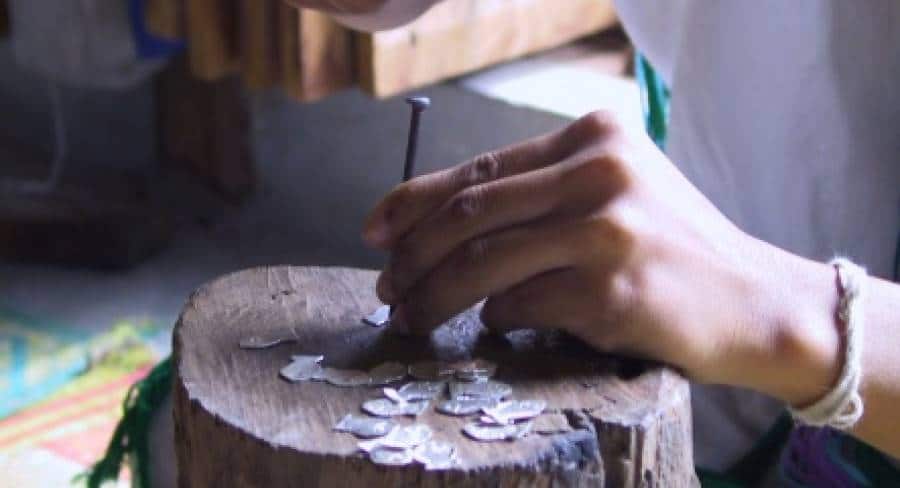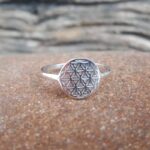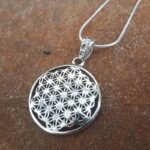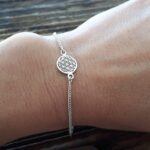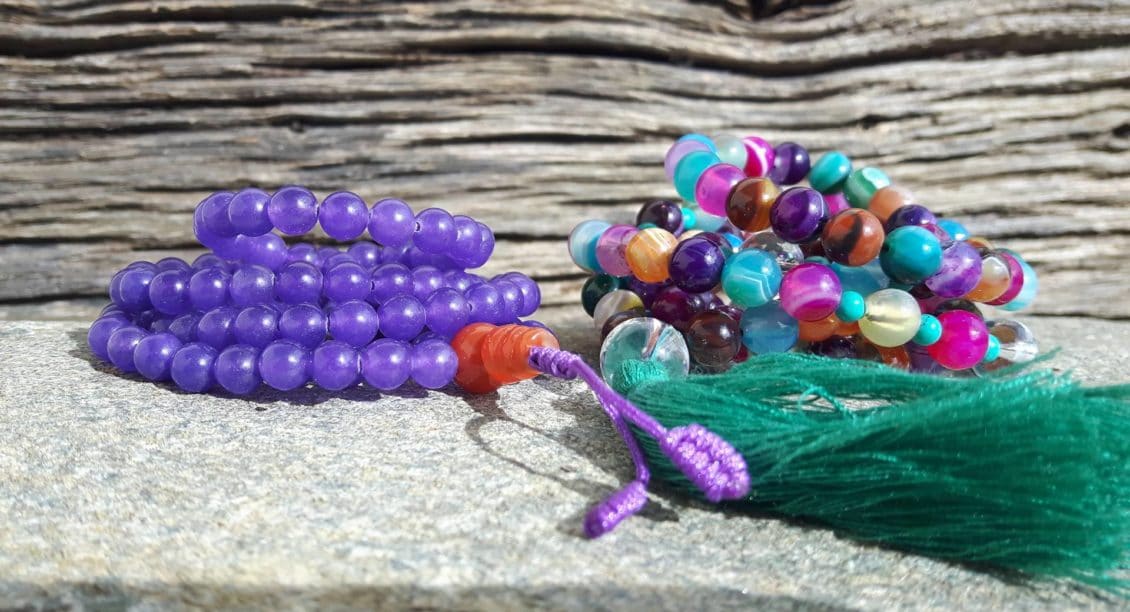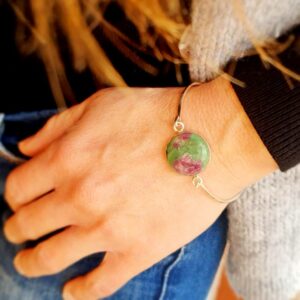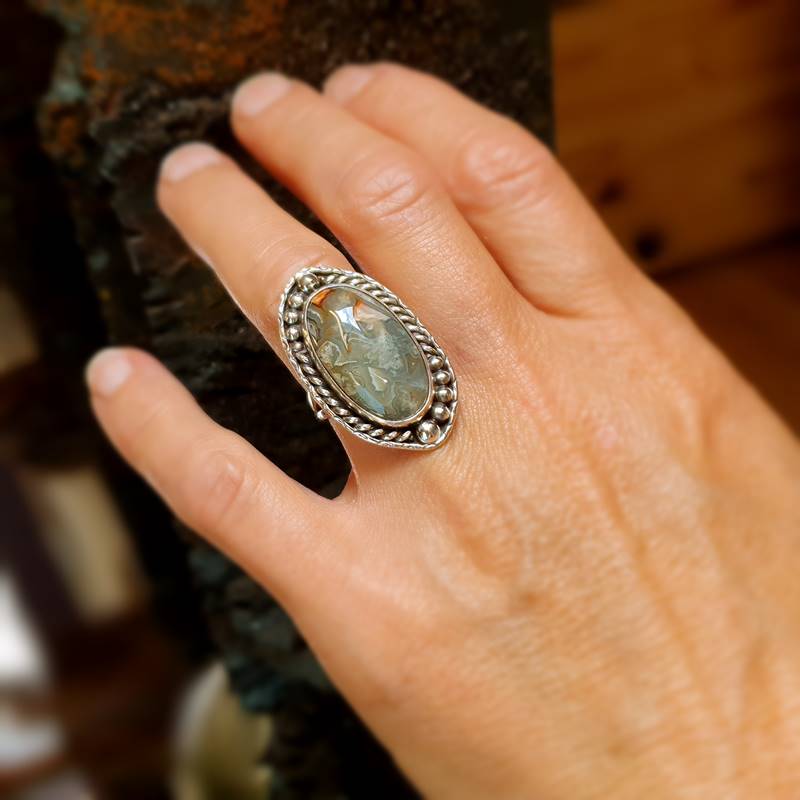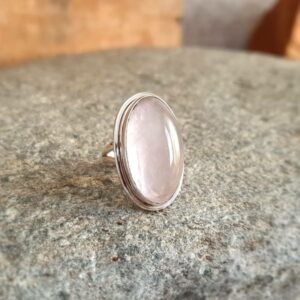jewelry blog
NATURAL STONES | JEWELRY TIPS | HUMANITARIAN | STORIES | ZEN
Maintaining silver jewelry
Here is a silver jewelry interview tutorial to read and share! Discover all the recipes of grandmother, the tricks of the modern times and those of the professionals.
First of all, it is normal for silver jewelry to blacken. A silver jewelry can be of excellent quality, it is nonetheless subject to the vagaries of time. Silver oxidizes, this chemical reaction takes place between the silver layer in contact with the air, and the oxygen. Indeed, whether you wear your jewel or not, the money will darken over time.
Maintaining silver jewelry

Several factors will lead to a more or less rapid blackening. Let's see what accelerates the blackening of silver, or its oxidation:
- The PH of your skin, which varies from person to person and depending on what you consume. Indeed your PH will be more acidic if you consume acidic foods or alcoholic beverages. To learn more, read this Naturopathic article.
- Contact with
- acid perspiration
- cosmetics,
- the perfume,
- cleaning products,
- chlorinated pool water
- synthetic fabrics, which cause electrochemical reactions
- a very humid air
Maintenance silver jewelry, everyday
Here are some simple steps to take care of your silver jewelry:
- Remove them for cleaning, sport, going to the pool
- Drop your perfume drops away from the contact areas with your jewelry
- Prefer a neutral pH soap (if you do not remove your jewelry in the shower!)
- Remove your silver jewelry to sleep if your skin is acid (acid skin = your jewelry darken very quickly)
Little wonder of trick : store your jewelry with a chalk. In fact, the chalk stick will absorb moisture.
How to clean silver jewelry
You have been warned!, the maintenance of silver jewelry is not at all the same if it involves precious or semi-precious stones. Indeed, it will be necessary to go around the stones so as not to damage them! Their chemical composition might not at all appreciate a treatment reserved for silver.
If your silver jewelry includes stones, use a toothbrush, a soft cloth and a dose of patience. If necessary, a little elbow grease will suffice.
Remember to use a chamois or microfiber type cloth to avoid scratching the money.
The recipes of grandmothers
- Baking soda
Place the baking soda on a previously wet toothbrush and rub gently.
- Ash of cold wood
Same as bicarbonate
- White vinegar
Cover your silver jewelry with white vinegar. Leave 2 for hours.
- Lemon juice
Dip a toothbrush into squeezed lemon juice and rub gently.
The tricks of modern times
- Coca
Soak your silver jewelry in coca, for 1 minute. Wash them with soapy water and rinse thoroughly.
- Toothpaste
Cover the silver jewelry with toothpaste and let sit 30 minutes.
- Beer
Plunge your silver jewels into the beer. Leave it overnight.
The vision of the professional
All of these methods work very well for light oxidation. For a more intense jewelry maintenance there are baths for professional cleaning. However, it is preferable to avoid metal cleaning fluids that you will find in supermarkets because they are too corrosive. There are products dedicated to the maintenance of jewelry, such as products Hagerty, a brand specializing in the care of jewelry and precious objects. These items range from 7 to 10 euros.
Wink nature
Prefer maintenance of jewelry with natural products, which will not attack them. Regular maintenance of your jewelry with natural products should suffice. A little parenthesis concerning ultrasonic cleaners: this method, proposed in some jewelers, is not entirely natural, because the process is accompanied by a chemical bath.
You liked our “silver jewelry maintenance” tutorial, subscribe to our newsletter.
Omyoki handcrafted jewelry
Omyoki handcrafted jewelry is handmade by artisans from India, Nepal, Thailand, Indonesia. Discover their craftsmanship in this video.
We introduce you to some of the people who work with Omyoki. The manufacture of artisan jewelry is made by locals who have become friends. The workshops have all been visited and the working conditions checked, in order to propose ethical jewels.
Handmade jewelry Omyoki, handmade
Mahesh's workshop in Nepal
Mahesh lives in the suburbs of Kathmandu, in the family house, with his parents, his wife and his 2 children. He has been making malas and pearl bracelets for 14 years! 14 years of threading pearls, with patience, gentleness and tranquility. Mahesh is very religious, when he puts on beads he seems to be meditating. There emanates from this person an absolute calm, a peaceful force. Well known in his neighborhood, it is not uncommon to see one or two friends from the surrounding area come to chat and drink tea. Mahesh was introduced to me a few years ago by a Polish volunteer teacher in a Nepalese village for more than 7 years. A great meeting.
Govin's workshop in India
The handcrafted jewelry workshop is nestled in the heart of Rajasthan. This region of north-western India has been renowned for its jewelry know-how since the dawn of time. Rajasthan is a very colorful region of immense cultural wealth. It is not for nothing that it is one of the most touristic destinations in India. I met Govin in 2017, thanks to several business friends in Europe. Everyone advised me to go see Govin and what a meeting! Govin, Muku, Eddy, and a few craftsmen fervently work silver, crimp, brush, polish. The workshop is a real Ali Baba's cave, full of a thousand semi-precious stones. No machine, apart from something to polish! All silver jewelry is handmade, from A to Z. Forget the machines, even the simplest. It is all the more incredible to see the birth of these handmade jewels.
Fon & Lek's workshop in Thailand
Lek's workshop is located in northern Thailand, near the Burmese border. The Karen, tribes of the northern mountains are very skilled with their hands. The Karens work in fabric and silver and are renowned for their handcrafted silver jewelry. Unlike many countries, they use purer silver, which is 95-98% silver, instead of 92,5%, which is the standard. I first met Fon and Lek in Bangkok, because they go down there to shop. Believe it or not, communication was very complicated at first because the Thai people are not that English speaking! By dint of gestures and time we have come to understand each other. I have been to the north of this country a few times and the creativity, color and ingenuity there is incredible.
Discover also our pretty pictures of jewels on Instagram, or follow us on Facebook.
Mandala, a path to oneself
The mandala is a very elaborate design, formed of circles and concentric figures. Since the dawn of time, the circle has been the symbol of the cycle of life (birth, maturity, death, resurrection). But the elaborate mandala comes from Hinduism and Buddhism. The painting of these graphics is used as a means to channel the mind and bring about calm and inner peace. Mandala in Sanskrit means circle, and symbolizes the sphere, the environment, the community.
Why are we talking about it ?
Our logo is a mandala, did you notice that?
Definition of the Buddhist Mandala
In Buddhism, the mandala is used to meditate and reflect on the impermanence of life. The mandala is at the same time a summary of the spatial manifestation, an image of the world, and a representation of divine powers. Mandalas are full of symbols, all of which have meaning, and sometimes mystical characters. Some, very elaborate and codified, become semi-figurative, semi-abstract.
The sand mandala
To emphasize the impermanence of things, Buddhist monks make sand mandalas on rare occasions. Most of the time, it is made by 4 monks, who will spend days drawing the mandala, while the other monks of the monastery will meditate and pray. Each monk takes care of ¼ of the drawing and deposits colored sand with natural pigments. They use a small funnel-shaped tool, the chak-pure, to deposit the sand almost grain by grain. Gradually the drawings take shape to become true works of art. Once finished, the mandala will be scanned, in a snap.
Paintings
In Nepal, India and Tibet, artisans paint mandalas. Most are destined for Buddhist temples but also for Buddhist houses.
Mandala and nature
The mandala is the reflection of nature. It is found there, from the infinitely large to the infinitely small: from the spiral of galaxies to the planetary orbits of our solar system, celestial spheres with concentric shapes of crystals, snowflakes, flowers or atoms.
A bit of psychology
In 1928 the psychoanalyst Carl Jung introduces the mandala in the West. His studies show that when people go through difficult phases, they spontaneously draw rosette shapes. After conducting extensive research, Jung comes to the conclusion that in psychological terms, the mandala represents the totality of the person. He uses the drawing of mandalas for the therapeutic treatment of some of his patients. For Jung the mandalas inspire serenity and drawing them source of structure, balance, and harmony.
And nowadays ...
Today is a drawing that we find everywhere, in tattoos, jewelry, coloring for children ... If you want to learn how to make a mandala, here is a tuto Very well done. Here are some of Omyoki's mandala jewelry.
Did you like the story? subscribe to the newsletter!
Mala necklace, how to choose?
Composed of semi-precious stones, seeds or wood, the mala necklace can be very precious or extremely simple. The mala is a medium of meditation for Buddhists and Hindus. It is used to count the number of mantras recited in a loop. Buddhists use sound, the vibration of the voice, to channel the mind and detach it from the physical world. The recitation of mantras, these "prayers", is intended to bring calm and to direct the mind towards meditation.
Buddhists all over the world graze this rosary at various times of the day; and when not in use, wear it around the neck. A mala always stands with the left hand. It is degraded by pulling the grains toward you, symbolizing that one draws the beings out of the suffering and that one accumulates positive Karma during the practice.
Origins of the mala necklace
The term "Mala" is a word in Sanskrit (language of Hindu and Buddhist religious texts) which means “meditation garland”. Originally, malas were mostly used for a special style of meditation called “Japa” which means “to recite”. This is why malas are sometimes called japa mala.
How to choose the right size ?
When buying a mala on the internet it is difficult to realize the differences in size. The length of a mala necklace will be very different if the beads are 8mm or 6mm.
The length of a classic mala, with 108 beads of 8 mm will be about 50 cm, or 1 meter rolled. The length of a pearl mala 6 mm is about 35 cm, or 70 cm unwrapped.
The big differences between a mala multi-tower or mala necklace
The multi-tower malas that are worn on the wrist are elastic malas. This requires the mala to be very light. Multi-turn malas are usually composed of 6 mm beads or light seeds. Mala necklaces are made of 8 mm, 9 mm, or larger, threaded on thick and strong thread. It is often impossible to wear a traditional mala necklace in multi-turn wrist because the length rarely matches.
Why 108 pearls?
There are several reasons or concepts for the number of 108 pearls:
- 108 feelings: according to Buddhists, there are 108 feelings. 36 in connection with the past, 36 in connection with the present and 36 in connection with the future.
- Buddha has 108 names. In Hinduism, some gods also have 108 names.
- Buddha had to undergo 108 trials to attain enlightenment.
- According to Buddhism, there are 108 spiritual sufferings (kleshas).
- In yoga or tai chi, there would be 108 positions or movements.
- The Upanishads, this set of sacred and philosophical texts forming the theoretical basis of the Hindu religion, are 108.
- Numbers 1, 0 and 8: In Hinduism, 1 represents god, 0 means emptiness and humility found in spiritual practice and 8 symbolizes the infinite.
- In Buddhism, there are 108 sins to avoid, and 108 virtues to cultivate.
Cultural wink
For Christians, the rosary is an instrument of prayer. It is composed of 53 grains, 5 series of 10 prayers and 5 various prayer grains.
Among Muslims, the rosary or tasbih is used to recite the repetition including the names of Allah's names and the glorification of God after prayers. He stands with his right hand.
Small introduction to meditation
Larimar, a rare stone
The larimar, a fine stone that has such a beautiful history! This mysterious blue and green water stone comes straight from the Dominican Republic. It's the the world's only larimar deposit. It was discovered in the 1900 years by a priest but the government refused to extract it. It was only from 1975 that it was exploited by Miguel Mendez who managed to obtain the exploitation right. He gives the semi-precious stone the name of his daughter Lari, to whom he adds the word "mar", sea in Spanish. Hence the name of larimar. The Bahoruco mine has created a whole local economy and offers work for many people in the area. Work in the mine but also in many local jewelers, at the museum of Santo Domingo.
Exploitation of the Larimar
To get you in the mood, you can watch the presentation video of the larimar jewelry museum.
The larimar mine, located near Los Chupaderos, is exploited in two different ways. Part is managed by the State of Dominican Republic with mechanical means. The other part is mined by small local farmers who work with archaic means. Here is another video that shows the simplicity of the means implemented.
Interview tip
The larimar is photosensitive, storing it in the dark will prevent it from losing its color over the years.
The properties of Larimar
In lithotherapy the larimar is reputed to be a stone of extreme softness, which brings calm and balance. The stone stimulates vital centers and self healing. It stabilizes the nervous system and enhances the joy of living. Stone of well-being, it is recommended to wear the larimar close to the body. It can also be associated with other stones (rock crystal, turquoise, chalcedony ...)
Colors: Light Blue to Blue Green
Chakras: chakras of the throat and solar plexus.
Larimar jewelry
So much to see... rings in silver and larimar, entirely handmade. Jewelry with a modern and refined design, for a beautiful enhancement of the fine stone.
What is 925 silver?
925 silver is a standard, it equates to a silver content of the jewelry you buy. The silver used to make the jewelry can not be pure 100%, because it would be too soft. In order to be able to work it is added one or more alloying metals, copper most of the time.
In Europe, and in most countries of the world silver jewelry, are 925 silver. It is the 1er silver title, it has minium content of 92,5%. This is also known as Sterling Silver, Sterling Silver 925. Sterling silver, for example, is composed of 92.5% silver and 7.5% copper. Sterling silver has been a silver category for jewelery in many countries since the XIIIth century.
How to recognize 925 silver jewelry?
We recognize the 925 silver jewelry with their punch. This punch displays the 925 number. He is struck inside the rings, on the clasps, on the back of the pendants and the earrings, etc. On extremely fine jewelry, it is sometimes impossible to hit this punch, so do not be too surprised.
How reliable is a 925 stamp?
A good question to ask! The 925 stamp is used all over the world but is not always controlled. In France, in Europe, and in Western countries, silver is subject to very strict rules. In France, it is the customs that manage everything related to gold and silver. The 925 stamp is therefore garanteed by strict rules and regulations. The jeweler's own stamp should be found as well on the jewelry.
The designations “silver”, which are not 925 silver
- Bali silver (Bali silver): very often lower than 925 / 1000
- Tibetan silver = silver metal with low silver content
- German silver (German silver): a mix of copper and nickel / zinc containing very little or no silver at all.
- Silver plated = the jewelry can be made of copper, brass or any metal, whith a thin layer of silver coating. This layer of silver may have various thickness, depending the quality of the jewelry. Silver plated jewelry are plated with 925 silver in Europe and Western countries.
Discover our maintenance tips for silver or brass jewellery, the history of semi-precious stones or the virtues of natural stones. On this jewelry blog you will also find travel stories, that of our artisans, articles on gemstone mining, and much more. We regularly offer new articles. Follow, share, comment! The Omyoki jewelry blog is waiting for your opinions...
Contribute to the Blog Bijoux
If you wish to contribute with an article, a subject, a theme, please contact us. Our Jewelry Blog is fond of quality content, which will be a plus for the jewelry fan community. Tpics covered are carefully cross-checked and must revolve around jewelry, fashion, handmade, fairtrade, etc. If you have a passion for jewelry, come share it with us.
Partnerships with bloggers and influencers are welcome. Similarly if you are present on Instagram, Pinterest or YouTube, and want to make your content appear on the Jewelry Blog, we will be happy to share your articles, photos, or videos.



